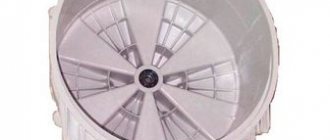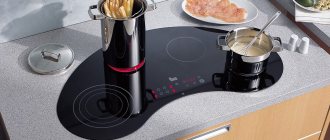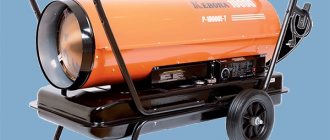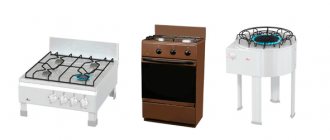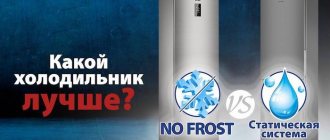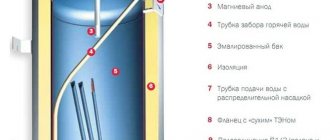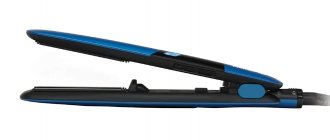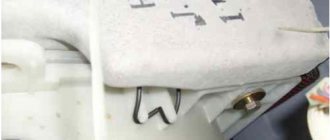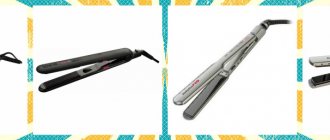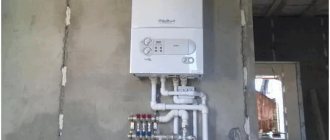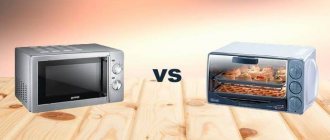Changes occur in our lives every year. But despite progress, hot water supply in high-rise buildings is often intermittent. In addition, the quality of the coolant itself does not always meet the standards. Therefore, many practical people have long ago installed their own water heaters in their apartments. They provide hot water to all apartment residents in the required volume. Therefore, it is necessary to choose the right equipment.
There are many recommendations for choosing this electrical equipment. The main selection parameter is its technical characteristics: power, performance, functional features. But besides this, you should pay attention to the material from which the inside of the tank is made.
How to choose the right inner lining for your water heater tank
Internal coating of a water heater tank - which is better?
Currently, manufacturers offer water heaters with 3 types of internal anti-corrosion coating:
- with titanium coating;
- stainless steel;
- from glass porcelain.
They reliably protect the container from corrosion processes. In other words, the lifespan of the device depends on the internal coating of the tank.
Which tank is better to choose a water heater with? These questions are often asked by buyers. It is impossible to give an unambiguous answer to this question. After all, each of them has its own pros and cons.
STAINLESS STEEL - FEATURES AND ADVANTAGES OF COATING
Tanks coated with steel have significant advantages, but they are expensive and not available to every consumer. These boilers have a long lifespan - they can last for decades without requiring repairs. The advantages of such equipment also include:
- resistance of the coating to falls and damage. Even if you turn on the tank without water, the internal coating will not be damaged at all;
- resistance to temperature changes;
- Warranty period is up to 10 years.
Many people prefer stainless steel-coated tanks, believing that it is better to overpay once and then use the boiler for decades, but they also have their own disadvantages that must be taken into account when choosing and purchasing:
- high price;
- When using a simple welding method in production, oxidation may appear on the seams; chemical reactions occur faster at elevated temperatures. That is why you should choose tanks whose connecting seams are made using anti-corrosion materials;
- difficulty of installation due to the heavy weight of the equipment.
Some disadvantages include iron toxicity. This belief is fundamentally wrong, because only divalent iron is considered toxic, and such a compound is not formed when steel comes into contact with water. Research into the presence of this element in containers has shown that the source can only be water, and not steel.
Storage water heater Neoclima EWH 80
What is the best water heater tank coating?
All these disadvantages cannot be compared with the advantages, so if you have to choose which tank to buy - with an enamel or steel coating, choose the latter option. An interesting fact is that some manufacturers offer tanks with an internal coating of stainless steel coated with silver. They cost more than usual, because the manufacturer guarantees that pathogenic flora will not develop in such a tank. In fact, this is nothing more than a marketing year, because the high temperature inside is quite enough to provide protection against harmful bacteria.
Tanks coated with steel are the most common and in demand; they cannot be classified as a budget class of equipment, but they are not the most expensive option.
Enamel and glass ceramics: advantages and disadvantages
Today, buyers give their preference to water heaters with glass porcelain coating. Such equipment is characterized by a minimal price compared to others. So, the advantages of these units:
- Profitable price.
- Preventive work to remove contaminants (sediment) on enamel coatings is easy to eliminate. To do this, just use a good detergent.
- Enamel is an inert material that is resistant to various chemicals. For example, only aggressive compounds such as hydrofluoric acid can damage the structure of glass ceramics.
Boiler with enameled tank and magnesium anode
The disadvantages of such an internal coating of the container include:
- The equipment faces the problem of good adhesion between the coating and the metal of the tank.
- Ceramic coating differs significantly in the composition of the metal from which the boiler itself is made. Often, due to constant temperature changes, materials separate from each other. But the use of glass ceramics in the production of equipment practically eliminates this drawback.
- The composition of bulk enamel may include coloring pigments. The latter often contain arsenic and lead - substances harmful to the body. But it should be remembered that devices manufactured over the last 20 years with a glass-ceramic tank do not have such a drawback.
- Ceramics is a fairly fragile material. Sudden shocks can lead to destruction of the coating. But this indicator is not important for permanently installed water heaters.
Interesting! Enamel and glass porcelain are particularly sensitive to temperature changes. This often causes the formation of microcracks on the surface.
To avoid this, some users use equipment by setting its maximum water heating temperature to 600C. But experienced experts recommend increasing the water heating temperature to maximum at least once a month to prevent the development of harmful bacteria inside the container.
The manufacturer's warranty for water heaters with enamel coating is 1 year.
Enamel and glass ceramics
This material for heater tanks is more widespread, and some time ago stainless steel tanks were the exception rather than a choice. Let us consider in detail its advantages and disadvantages.
Pros:
- The first and most important advantage is the lower price, since stainless steel is much more expensive.
- Enamel is practically inert to the effects of chemicals; for example, the coating of a glass-ceramic tank can only be damaged by extremely aggressive compounds, such as hydrofluoric acid or aqua regia.
- Operations to remove sediment from an enamel coating are much easier to carry out; a regular detergent is sufficient.
Minuses:
- The ceramic coating differs in composition from the metal of the tank, so it may peel off as a result of sudden temperature changes. However, modern formulations, not the old self-leveling enamel, but glass ceramics, reduce this disadvantage to nothing.
- The problem of normal adhesion of metal and coating has always arisen.
- Ceramic is more brittle than steel, so it can easily break from sudden shocks. However, for permanently mounted heaters this is not important.
- Self-leveling enamel may contain (especially as coloring pigments) harmful substances such as lead or arsenic. But here, too, it should be noted that water heaters with a glass-ceramic tank, created in the last 20-30 years, cannot have such a drawback (if they are not counterfeit) due to strict sanitary standards.
Of course, we will definitely summarize several reviews from various forums:
- Nikolay - “The era of self-leveling enamel is gone. Modern water heaters with a wet coating are much better than the old ones. Glass enamel is superior to stainless steel and can be called a material of a new generation and the 21st century.”
- Grandfather Mazay - “Take stainless steel. In our country and with our water it is much better. Although the prices are higher. But it doesn’t require expensive maintenance.”
- IVANOV IVANOVICH - “Enamel is both cheaper and more durable. Why pay extra money for the taste of rust in a mug?
We recommend choosing a washing machine for your cottage: without running water and with a water tank
Stainless steel: advantages and disadvantages
Water heaters with an internal stainless steel coating belong to the category of expensive equipment. In principle, this affects their service life.
Stainless steel water heater
The advantages of boilers with this coating include:
- The coating is resistant to various shocks and damage compared to the above-mentioned model.
- Such water heaters are not afraid of temperature changes. If the equipment suddenly overheats due to the lack of liquid in it, it will not suffer. You will only need to replace the heating element and other parts that may fail due to high temperature.
- The service life of such boilers is longer than the models described above.
- The warranty period for containers with this coating varies from 7 to 10 years.
Disadvantages include:
- Stainless steel is characterized by its resistance to corrosion. But if a simple welding method was used, in this place the composition of the metal differs from the main one. The use of outdated technologies in the manufacture of equipment can cause oxidation on the seams. In addition, it should be remembered that all chemical reactions occur much faster at elevated temperatures.
- Many people remember the toxicity of iron, which comes into direct contact with water. But only divalent iron can have a negative impact on human health. Such a connection practically cannot be formed when steel comes into contact with water. In addition, examinations with ultra-precise instruments and methods did not show the presence of this element in large containers, except that the water itself could be its source.
- The price of equipment for heating water with a stainless steel coating significantly exceeds the cost of the models described above.
Plasma welding is used in the manufacture of a water heater tank
Stainless steel
the advantages right away :
- A stainless steel water heater is not afraid of sudden changes in temperature. Even if the water heater accidentally overheats due to lack of water in the tank, it will not be damaged; the heating element and other parts damaged due to high temperature will have to be replaced.
- It is also impossible for the coating to be damaged by impacts and shocks, which can peel off the enamel that is poorly bonded to the base.
Now about the disadvantages :
- There is often talk about the toxicity of iron that comes into contact with water. In fact, only divalent iron is toxic; it is practically not formed upon contact of water with steel; in a water heater, even of a large capacity, its content cannot be detected by ultra-precise instrumental methods, unless its source is tap water. But there is a danger of a person having an allergy to alloying metals (for example, vanadium), although it is also negligible.
- Despite the fact that a stainless steel container does not corrode, the welding joints differ in composition from the base metal if the simplest welding method with filler material was used. Therefore, if outdated technologies were used, oxidation may occur at the seams, aggravated by the fact that any chemical reactions occur faster when heated. To eliminate this effect, cathodic protection is used, but it complicates and increases the cost of the water heater (but additionally reduces corrosion on metal pipes galvanically connected to the water heater).
- Another argument in the debate about the best coating for a glass-ceramic or stainless steel tank is the price. We must agree, water heaters with enamel coating are cheaper. But this difference is significant only for cheap models.
In order not to be unfounded, here are a few reviews about heaters :
- Vasily Shpudeiko - “I used a heater with enamel all the time, as a rule, after 3-4 years cracks appeared in the coating. I bought stainless steel and didn't notice any difference. Including the taste of the water that everyone was afraid of.”
- MAX — “They said that stainless steel allows you to heat water faster but spoils its quality. I took Thermex IBL 10 with such a tank, after six months there were no differences, I probably still overpaid.
We recommend Sinks above the washing machine in the bathroom. Which sinks are best to buy? Instructions for installing a sink above a washing machine. Video
Titanium coated water heaters: advantages and disadvantages
Boilers with internal titanium coating are quite rare. They belong to a small class of devices. This lightweight and chemically resistant metal is applied electrostatically. As a result, the protective layer is highly resistant to corrosion processes and increases the strength of the equipment.
Due to the high adhesion and strength of the metal, the water heater can operate at high temperatures. This eliminates the risk of damage or peeling of the protective coating.
The weak point of the titanium coating is the welded joints. Corrosion often appears in these areas. And the cost of such equipment is quite high.
Boiler with two-layer titanium enamel
PORCELAIN GLASS TANKS
The main advantage is the affordable price. Manufacturers usually give such tanks a warranty of no more than a year. The fact is that the enamel will be destroyed by constant temperature changes, microcracks will appear inside, which will negatively affect the operation of the water heater. Many manufacturers additionally coat the inner surface of the tank with anti-corrosion compounds.
Some manufacturers use bioglass porcelain as the inner coating of the tank. This material does not rust and is not negatively affected by bacteria - they simply do not develop on its surface. The technology used to apply the bioglass porcelain coating is of great importance. The quality of the coating is checked using an ultrasonic scanning method, which allows you to identify bubbles and microcracks. It is impossible to carry out such a test on other types of enamel.
Storage water heater Thermex Hit 15 O (Pro)
It is also worth remembering that ceramic-coated tanks are very sensitive to falls and impacts. If the water heater is mounted permanently, then this indicator can be ignored. If you decide to buy a tank with just such a coating, then you should also pay attention to the following parameters:
- choose equipment with a magnesium anode, which will reduce the activity of oxidation processes. This anode must be periodically replaced with a new one;
- During installation, you should take care to install a deep cleaning filter.
Such a tank must not be overheated, otherwise the coating will quickly crack and the water heater will fail. To prevent it from overheating, you should set the maximum temperature no higher than 60-70 degrees. Once a month, the tank should still be heated to the maximum temperature - this will prevent the development of harmful bacteria inside the tank. It is also necessary to periodically clean the tank from plaque and scale using regular detergents.
Tips for using porcelain glass water heaters
Such water heaters are considered the most common. Unfortunately, not everyone can afford to purchase expensive equipment. But with proper operation, you can achieve uninterrupted operation of the equipment over a long period.
- You should give preference to models with a magnesium anode. Its presence greatly reduces the activity of oxidative processes, which negatively affect the performance of equipment.
- It is necessary to periodically replace the magnesium anode.
- A coarse filter must be installed at the water inlet. Grains of sand and other particles that get inside the boiler can damage the surface from the inside when heated.
- Try not to overheat the tank. For domestic needs, water at a temperature of 50-600C is sufficient.
Preventive inspections and cleaning will extend the life of your device
- The water heater must be cleaned 2 times a year. This procedure will significantly extend the life of your device. At the same time, plaque is removed from the walls and bottom of the container, the heating element is cleaned of scale, the wear of the magnesium anode is checked and then replaced if necessary.
In stores today there are various devices for heating water. They differ from each other not only in functionality, but also in the internal coating of the tank: stainless steel, glass ceramics, titanium coating. Each of them has its own advantages and disadvantages. But regardless of the model you choose, you should remember that proper care is the key to long-term operation of the device.
Glass porcelain boilers: some useful tips
But not everyone has the opportunity to purchase expensive models of water heaters. Don't be upset. With the right approach, uninterrupted operation is possible for decades. There are several tips that will help increase the service life of relatively inexpensive boilers.
- Choose models with a magnesium anode. This greatly reduces the activity of oxidative processes that destroy the tank. Replace the magnesium anode periodically.
- Use coarse filters at the water inlet. Grains of sand or other large particles that get inside the tank can heat up and damage the surface.
- Do not overheat the tank. A temperature of 50 - 60 °C in most cases is sufficient for domestic needs. At the same time, operating at this temperature, the water heater will last much longer.
- Clean the boiler at least 2 times a year. This seemingly cumbersome procedure is actually very useful. It consists of removing plaque from the bottom and walls of the internal tank, cleaning the heating element from scale, checking the wear of the magnesium anode and replacing it if necessary.
Which interior coating is better?
Manufacturers produce 4 types of internal coating for tanks:
- steel treated with enamel;
- stainless steel;
- titanium coating;
- glass ceramics.
Metal boilers
The body of all boilers is made of steel. Some models are made of stainless steel, others have an enamel coating inside that protects the surface from negative influences. The choice of a boiler based on the internal coating of the tank depends more on financial capabilities than on the quality of the equipment.
A stainless steel container is better than its enameled counterpart. It will not crack, will not be damaged by mechanical stress, and will not peel off over time. The service life of such a device is longer than an enameled tank in a water heater. Despite the fact that stainless steel samples are more expensive, they pay for themselves with a longer service life.
To extend the life of an enameled boiler, magnesium anodes are placed inside. They decrease over time and need to be changed periodically.
Titanium coating showed good performance. It is reliable, durable, and therefore practical. This type of spraying is not cheap, it is an option for those who know a lot about quality and are not limited in funds.
Glass ceramics
Glass ceramics are the cheapest option. It cracks quickly and is easily damaged. The maximum service life of a tank with this coating is 5 years.
Before choosing an electric water heater for your home, you should ask what the inside of the equipment is made of. Water and high temperature have a bad effect on the internal condition of the tank. How long it will last depends on the strength and reliability of the container.
